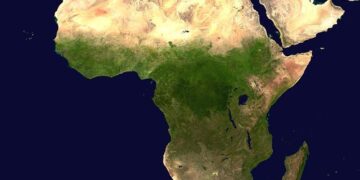In an era defined by geopolitical rivalries and shifting power dynamics, the global economy has increasingly become a battlefield for strategic influence. “The Weaponized World Economy: Surviving the New Age of Economic Coercion,” featured in Foreign Affairs, explores how nations are leveraging sanctions, trade restrictions, and financial tools as instruments of coercion. This emerging landscape challenges traditional diplomacy and compels countries to develop new strategies to protect their economic sovereignty and global standing. As economic statecraft reshapes international relations, understanding the mechanics and implications of this weaponized economy is critical for policymakers and businesses alike.
The Rise of Economic Coercion as a Geopolitical Weapon
In recent years, nations have increasingly turned to economic pressure as a subtle yet potent form of geopolitical influence. Unlike traditional warfare, this method leverages global trade networks, financial systems, and access to critical resources to compel rival states into policy concessions or strategic retreats. Economic coercion transcends simple sanctions by incorporating complex mechanisms such as export controls, investment restrictions, and currency manipulations that can cripple key sectors without triggering overt military conflict. This shift signals a new era where economic might is as decisive as military power, redefining how states pursue their national interests on the world stage.
Key elements that characterize this evolving strategy include:
- Targeted financial sanctions aimed at elites and specific industries.
- Trade embargoes that disrupt supply chains and access to technology.
- Energy dependency used as leverage to influence policy decisions.
- Cyber-enabled financial blockades designed to isolate economies digitally.
These tools, often deployed in concert, have complicated the calculus of international engagement, forcing states to recalibrate alliances and develop resilience strategies. Below is a concise overview of key actors using economic coercion in the last decade:
| Country | Primary Method | Target Regions | Impact Level |
|---|---|---|---|
| United States | Sanctions & Technology Export Controls | China, Russia, Iran | High |
| China | Trade Restrictions & Investment Screenings | Australia, Taiwan, U.S. | Medium |
| Russia | Energy Leverage & Financial Pressure | Europe, Ukraine | High |
Navigating Sanctions and Supply Chain Vulnerabilities
As geopolitical tensions escalate, businesses and governments alike are grappling with an increasingly complex matrix of sanctions regimes, each carrying the potential to disrupt global supply chains. From restrictions on technological exports to financial transactions, the web of economic coercion requires agile navigation and comprehensive risk assessment. Companies must not only monitor regulatory landscapes across multiple jurisdictions but also anticipate indirect impacts that arise from dependencies on sanctioned entities or intermediaries. Failure to adapt swiftly could spell significant operational and financial setbacks in an era where sanctions are wielded as strategic weapons.
To mitigate vulnerabilities, enterprises are adopting diversified sourcing strategies and enhancing supply chain transparency through cutting-edge technologies such as blockchain and AI-driven analytics. Key focus areas include:
- Supplier Risk Management: Vetting partners for compliance and resilience against sanctions spillovers.
- Flexibility in Logistics: Establishing alternative routes and storage hubs to avoid chokepoints.
- Regulatory Intelligence: Real-time updates to navigate rapidly evolving sanction lists.
| Supply Chain Factor | Sanction Risk | Mitigation Tactic |
|---|---|---|
| Raw Material Sourcing | High | Alternative suppliers in compliant regions |
| Financial Transactions | Medium | Use of screened intermediaries |
| Transport Logistics | High | Multiple routing options |
| Technology Transfers | Critical | Strict compliance programs |
Strategies for Building Resilient and Sovereign Economies
Amid intensifying economic sanctions and global supply chain disruptions, nations are increasingly prioritizing autonomy by harnessing domestic capabilities and diversifying international partnerships. Key approaches involve investing heavily in local innovation ecosystems to reduce reliance on foreign technology and critical inputs. Governments are also incentivizing strategic industries to build redundancy through regional supply clusters, mitigating risks posed by single-source dependencies. Furthermore, fostering strong multilateral trade agreements beyond traditional alliances creates a buffer against economic coercion attempts, enabling countries to pivot swiftly when certain corridors close.
Practical frameworks gaining traction include:
- Establishment of sovereign wealth funds focused on strategic resource stockpiling
- Implementation of digital infrastructure safeguards to secure data sovereignty
- Promotion of cross-border energy interconnectivity to stabilize supply and pricing
- Encouraging public-private partnerships that accelerate domestic manufacturing capabilities
| Strategy | Primary Benefit | Example Nation |
|---|---|---|
| Resource Stockpiling | Supply Chain Stability | Singapore |
| Data Sovereignty | Cybersecurity Strength | Estonia |
| Energy Interconnectivity | Market Resilience | Germany |
Insights and Conclusions
As the global landscape shifts toward an era where economic tools are wielded as instruments of power, nations and businesses alike must navigate an increasingly complex and fraught environment. Surviving this new age of economic coercion demands vigilance, adaptability, and a keen understanding of the geopolitical undercurrents shaping trade and finance. As explored in Foreign Affairs, the weaponization of the world economy is not a passing phase but a defining feature of contemporary international relations-one that will test the resilience of the global order in the years ahead.































